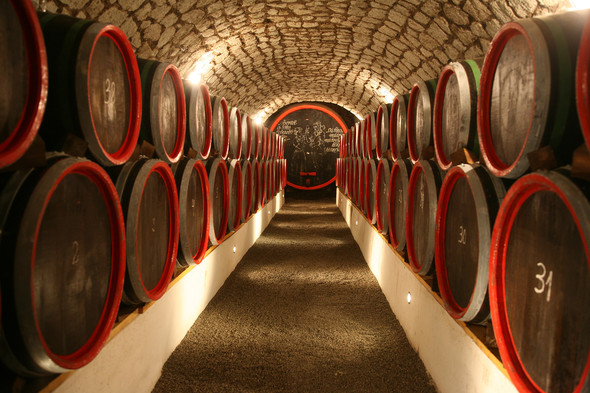The Slovakian Tokaj has been a subject of an old argument between Hungary and Slovakia, and I am sure, the keyword in this case would not be the past or politics, but rather quality. The different legal controls, various wine categories or vineyards known as Tokaji will no longer interest people if they are able to find real quality in their glass. No doubt the owners of Zlatý Strapec, Géza Nagy and Anna Nagyová (a local couple of Hungarian origin), are aware of this fact. The fact that quality is the only keyword which causes people travel there from as far away as five hundred kilometres, just to buy their wines. The family estate was established after the collapse of Communism, at the beginning of the 1990s. At first they also continued to make wines in the so-called ‘old school’ until recently, meaning they didn’t make any wines using reductive methods.
The argument over ‘old’ and ‘new’ in the Tokaj wine region began in the first third of the 90s, on the Hungarian side. Under Communism, the production method of Tokaji Aszú was changed in order to meet the needs of the Soviet market. To fulfil huge quotas, they created large-scale vineyards, did away with the yield limitation system and began to add sugar to the wines, sweetening them with concentrated must. In addition, they stored and aged wines for years in barrels filled just two-thirds full, as they wanted to achieve quickly, in a destructive way, the oxidative notes considered desirable, such as hazelnut and bread-crust. In addition, they tried to hide and solve the potential faults caused by this process by fortifying the wines with alcohol.
The Hungarian wineries who at that time had foreign owners (Disznókő, Oremus, Hétszőlő) and the wine region’s iconic figure, István Szepsy, were the first to deal with this attitude. According to them, Aszú should never contain any added alcohol, can never be enriched by adding sugar or concentrated must, and should never be aged in partially filled barrels to achieve quicker oxidation. This argument we continued until commercial authorisation for the ‘new style Aszús’ was granted in Hungary in the mid-90s!! These are the wines which are milestones and premium wines everywhere in the world where they know what real Tokaji means! However, it’s a mistake to talk about oxidative or reductive Aszú. There’s no such thing as a reductive Aszú and there never has been! The main characteristic feature of Aszú wines is the balance between acidity, sugar and tannin, the latter always having been produced as a result of the long years of barrel ageing. In addition to the above, the most important difference is that, in the past, soaking aszú berries in older wine was permitted, nowadays this can be only done in must or wine from the same vintage. So now the real difference between old and new style Aszús can rather be found in the quantity of added sulphur. New style Aszús often still have bright colours and citric aromas even after ten years, whereas ‘old’ style wines age faster and oxidative aromas appear earlier if the sulphur content is low. But neither school’s wines get old and tired; Aszú is still a wine which can be consumed after as long as 100 years if stored in the right conditions!
Later they kept up with the market changes and dry wines fermented in steel tanks, which had never seen a barrel, such as Furmint, Lipovina and Sárga Muskotály, began to appear in their range. Their wines can only be bought in Viničky, at the winery. To encourage wine tourism, they were the first to open a guesthouse and a restaurant in the region, organise wine dinners and wine-tasting events, and also take part in various ‘open cellar’ festivals. Those who like Aszús with oxidative notes and crystal clear, lively acidity really must pay them a visit. This also applies to those who don’t, in order to discover that they are not really aware of the whole picture as concerns the Tokaji Aszú palette!






